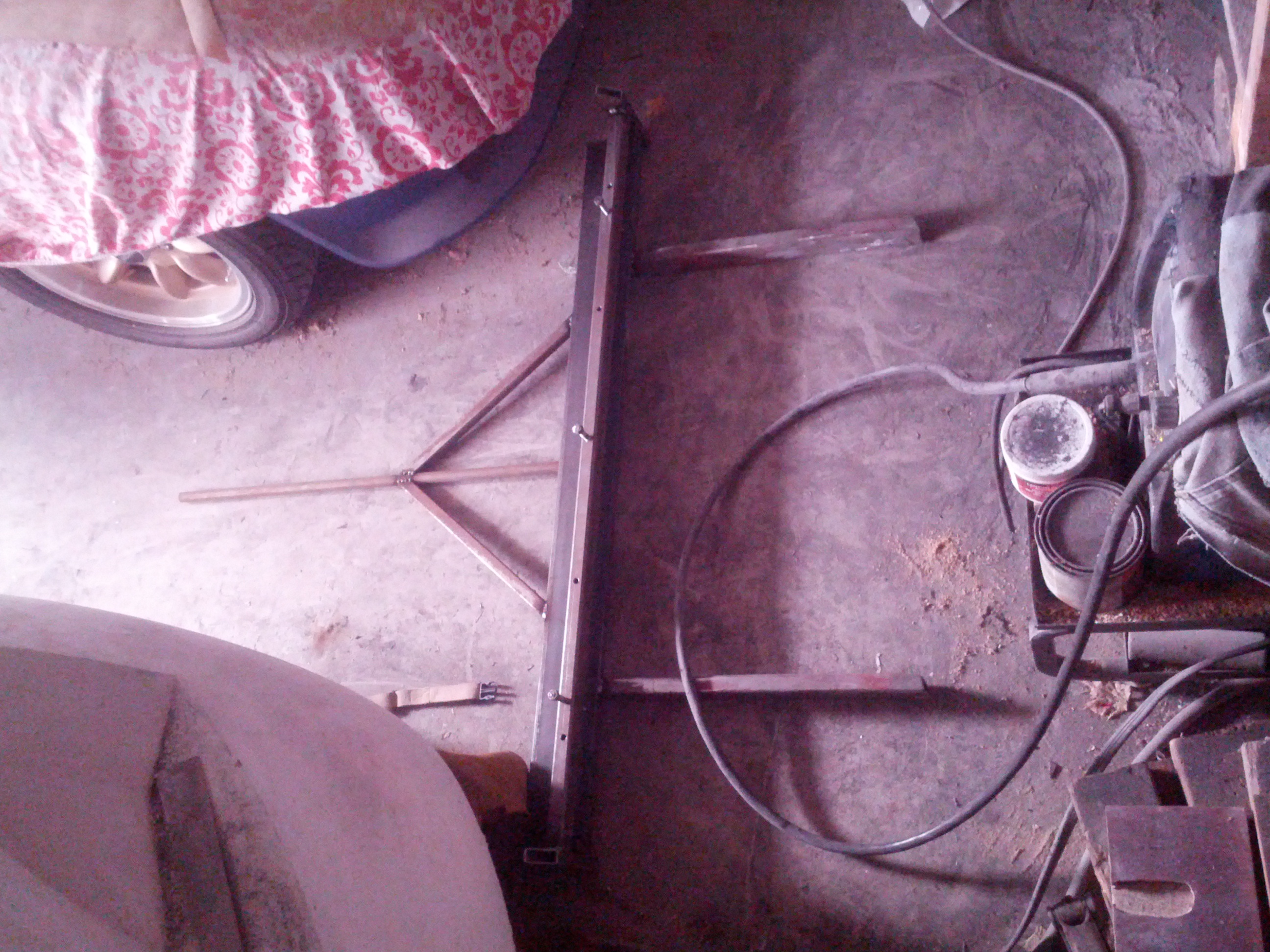The need for the larger break came out for the need to form 3 foot wide aluminum
for fuel tank as the original break we made is only 2 feet wide. Going second time
around thought was to make press rather then a break however to make a proper
press it would be need for much heavier materials to make the press from, it
would be naturally much heavier and additionally it would require sort of
hydraulic pump for the press. The benefit of it would had been that it could
handle much thicker material plus with different widths of blade it would be
possible to make more complex part forming. press rather then a break however to make a proper
press it would be need for much heavier materials to make the press from, it
would be naturally much heavier and additionally it would require sort of
hydraulic pump for the press. The benefit of it would had been that it could
handle much thicker material plus with different widths of blade it would be
possible to make more complex part forming.So being that the need was just to
make fuel tank we had opted out to make a larger break. Improving on version 1,
version 2.0 is 48.5" wide which will allow a 4 foot wide sheet to be easily fit
into it. Not sure if this will ever be used but for the cost of making it vs.
getting the aluminum sheets bent at fab shop to requirements will top the cost
of materials to make the break.
Not that the first version did not work but there are couple tings needed to be
changed:
1) being that the new version is 48" wide, hinging needs to be changed.
2) the hinging on the smaller version was bit off and was only capable of
bending to about 80'.
3) Working with 18ga sheet metal thickness of the material
did not make much of a problem so there was no adjustments for it.
4) The base on original had no extensions so bending of full with 2 foot sheet
was some times difficult
Started with 2x2x0.082" angle iron recycled from unused project, cut it down to
48.5". As this piece is going to be the base decided to strength it with
additional 1.5x1.0x0.128 tube, however rather than using a good piece we decided
to splice some old cutoffs to make up the length. Cut down 2 pieces of
0.75x1.5x0.096 old cut off into 8" lengths. The 48" tube was welded onto back of
the L iron and the 2 shorter pieces where welded to the sides. Base extensions
will be welded in later as to prevent bulkiness at current time.
The purchased hinges having back bent to them and to allow smooth movement
that would not run on either base or bending arm need to have spacer welded on.
We used scrap 0.120" tubes destant for scrap and cut out strips then welded them
to the backs of the hinges which provide enough of a spacing so that the hinges
pivot easily. With a flat piece clamped to top of the base then a hinge pressed
against it and clammed to the base they where welded onto the base. The method
proved to be very accurate as the hinges are pivoting at same straight line.
With the hinges welded to the base, next step is the folding ramp. Clamped short
pieces of flat onto wider side of the 2x1 tube then placed the tube with flat
edge onto the hinges and tack in place. Removed the clamps and flat pieces to
make sure that it pivots smooth then welded it fully into the hinges. This makes
the base and folding ramp a one piece.
Next what needs to be done is a support to hold down the L angle that will be
holding material to the base and on which the material will be bent against.
With the second piece of 1.5x1" piece, on the 1" a number of holes are drilled
and tapped for 3/8" rod that will be used to push down and hold the L angle.
Having the cross bar prepared and with a small 1x1 cutoffs used as spacers, the
horizontal cross bar set back 0.25" from face was welded into place onto the 2
8" side pieces. Next the clamping L angle was placed in its location then a
small 3/4" capped off square tubes where welded to it to provide a furthest
possible resting position.
With the main bending assembly completed, a scrap 18" 2x4 tubes where welded to
the back of the base part so that there will be a way in preventing the base
from twisting. scrap small size tubes where welded to the front pivoting ramp
giving a handle to use when bending
She does not look pretty but she has a way to clamp the material and a way to
pivot and make a bent in the sheet.
NOTE:
After some work with the tool, bending 18ga hot rolled steel sheet is not too
bad. However as this was build primarily 0.120" aluminum sheet for our fuel
tank, the process of bending 48" wide sheet proved to be bit harder chore then
expecting and bending steel sheet. First of all its the nature of aluminum and
how it bends but also the extra thickness of the aluminum that proved to be much
harder then expected. We had managed to bend it but knowing that it was that
hard to do it it probably would had been better if we would have taken the sheet
after marking it to local metal working shop and have it bent on press and most
likely thats what we had done for next one. |